
À la flamande, a global perspective on Contemporary Music in Flanders
For centuries, Flanders has been an international hub of musical creativity. From the late Middle Ages to the early seventeenth century, the whole of Europe had its eyes (and ears) on the musical innovations of the so-called ‘Flemish polyfonists’ – a group of highly trained composers and performers from the Low Countries, who travelled all across the continent to introduce their audiences to the newest musical trends. While it may seem as though this creative upsurge dissipated into more global trends during the seventeenth and eighteenth centuries, researchers from across the world are currently rediscovering archives full of Flemish music spanning from the early Baroque period to late romanticism. Modernity brought us innovators such as Karel Goeyvaerts and Lucien Goethals, who once again emphasised Flanders as a fertile ground for musical creativity. Today, Flanders takes up an undeniably central role in the international field of new music creation, combining a well-established concert and festival circuit with an exciting young generation of performers and composers.
This article focuses on the present state of new music creation in Flanders. As the broad field of contemporary music in Flanders largely reflects international musical trends instead of fostering specific national or regional ones, the article does not aim to identify an overarching ‘Flemish’ aesthetic. Instead, it celebrates the enormous diversity of current trends, attitudes, and ideas that emerge from the field. As a result, the definition of what constitutes contemporary or ‘new’ music as a field is necessarily kept broad, encompassing a multitude of voices from the fields of experimental composition, film music, and even pop/rock hybrids.
Contemporary music in Flanders is not a unified field. It exists in and through a widespread network of practitioners, programmers, institutions, and audiences. While the article highlights some of the players currently active in the field, the selection of ensembles, concert halls, festivals, composers and practitioners listed in this text is not exhaustive and does not imply any kind of judgement on value or merit. Rather, the article aims to trace some of the overarching trends which are currently emerging from the field. In total, the article identifies three broad tendencies in the Flemish contemporary music field. The first is an increased openness to dialogue and collaboration across the traditional boundaries of genre. Closely connected to that, the second ongoing trend emerging from the field is a curiosity towards multi-mediality, or, put differently, to the combination of elements from different art forms, such as video, theatre, and dance. Finally, the article also identifies a tendency towards productions that challenge or disrupt the traditional conventions around what a concert is, can, or should be.
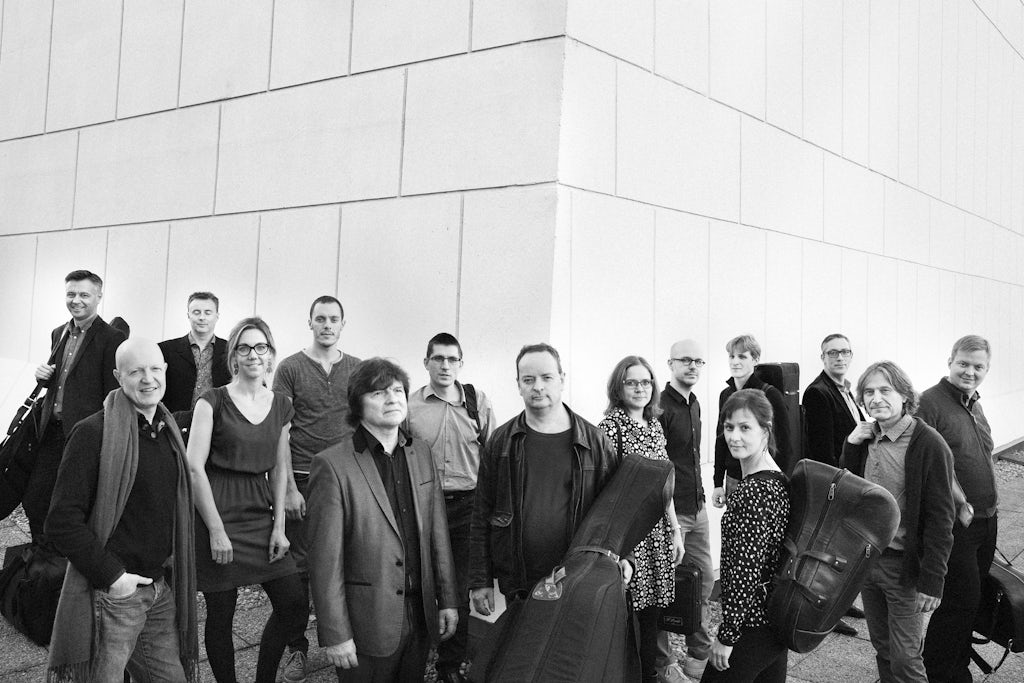
Hyper-connectivity and multi-mediality
“Strength through unity!”. The national motto of Belgium resonates strongly in the Flemish new music scene, where an increased openness to dialogue and collaboration across musical genres is clearly emerging. The concept of ‘new music’ is slowly moving away from its traditional associations with ‘art’ music and is dissipating into a dynamic field of musical experimentalism tour court.
As the edges of the field are becoming increasingly hazy, this new-found openness is paving the way for exciting new partnerships across the traditional boundaries of style and genre. The mission statement of the Brussels-based Echo Collective, founded by Neil Leiter and Margaret Hermant, for instance, simply reads ‘collaborate, create, classically’. The message is unambiguous: this collective of young musicians explicitly aims to build bridges between classical and non-classical genres. In just a few years’ time, Echo Collective has gained an impressive international reputation, not in the least through their collaborations with ambient music duo A Winged Victory for the Sullen and the late Icelandic film composer Jóhann Jóhannsson.
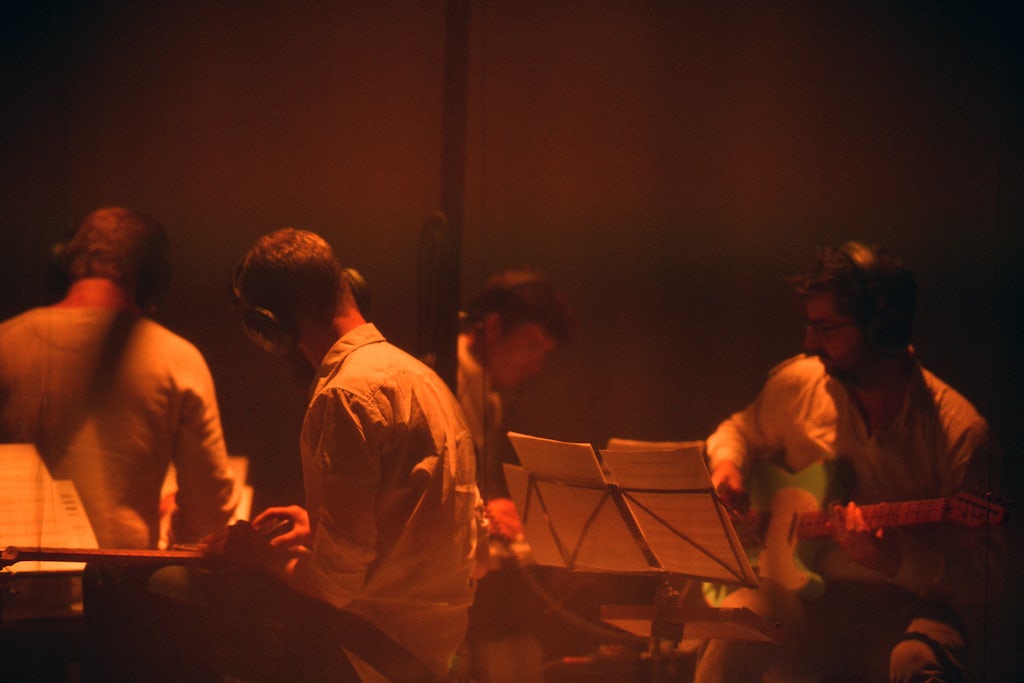
Another Brussels-based group, the guitar- and percussion-duo The Third Guy, explores the boundaries between composition, improvisation, and noise music. Electric guitar quartet ZWERM transposes the electronically amplified guitar, which is perhaps the ultimate symbol of rock music, to the classical concert hall with productions that hover between noise improvisation and contemporary composition.
Double bass player Nils Vermeulen, pianist Wouter Dewit, and saxophone player Mattias De Craene have all received international attention for their work on the threshold between neo-classical composition, ambient music and free jazz improvisation, while Miaux (the alter-ego of Antwerp-based keyboardist Mia Prce) has toured Europe with their melancholic soundscapes that linger between post-minimal music and electronica. In the world of film music, composers such as Valentin Hadjadj and Hannes De Maeyer are being noticed as they similarly navigate the borders between classical composition and popular music. Of course, the popularity of melodious, atmospheric, and minimalist music that blurs the boundaries between classical and popular genres is not by any means novel. Since the 1980s, artists like Wim Mertens have been leading the way in combining musical experiment with commercial success. What is new, however, is the ways in which this current generation of musicians reaches an increasingly global audience.
The importance of the internet and streaming services such as Spotify, Bandcamp, and even YouTube cannot be underestimated here. In an age of sharing and liking, some artists have found an immense global following while at the same time staying under the radar within the industry.
The music of Hasselt-based Wouter Dewit, for instance, has hardly been picked up by mainstream media, while his music has reached more than 17 million streams on Spotify. As the boundaries between what was traditionally understood as ‘classical’ and ‘popular’ music are increasingly blurring, these Flemish artists and ensembles are successfully reaching new audiences from across the globe. Such hyper-connectivity, both between musical genres and between Flanders and the world, offer exciting perspectives for the future. At the same time, however, the rising importance of social media and streaming services is putting some welcome pressure on the industry’s traditional ways of sharing and promoting music; urging the non-commercial music sector to take action in re-thinking what it means to reach an international audience today.
Closely related to that, several players in the Flemish field of new music have also proven to be increasingly open and curious towards dialogue and collaboration with artists from the worlds of theatre, dance, and the visual arts. Multi-mediality, or the combination of elements taken from different artistic disciplines, has become a central notion in the field. This usually translates to music productions which are elaborately staged, and which have clear dramaturgical elements to them.
Ensembles and collectives such as Bl!ndman, Ictus, ChampdAction, and Nadar Ensemble continue to play a leading role in this kind of interdisciplinary exploration. While Bl!ndman is touring the world with several large-scale music theatre productions in collaboration with Muziektheater Transparant and Toneelgroep Amsterdam, Ictus continues to deepen its creative alliance with Rosas, the contemporary dance company built around choreographer Anne Teresa De Keersmaeker. Meanwhile, ChampdAction and Nadar Ensemble keep redefining the very concept of ‘music’ by exploring the creative possibilities of novel technologies. The cross-over between technology and music is also widely explored by creative spaces and research institutions such as the Logos Foundation, which houses the world’s largest robotic orchestra, and the Institute for Psychoacoustics and Electronic Music (IPEM), a research centre at Ghent University which focuses on embodied music cognition.
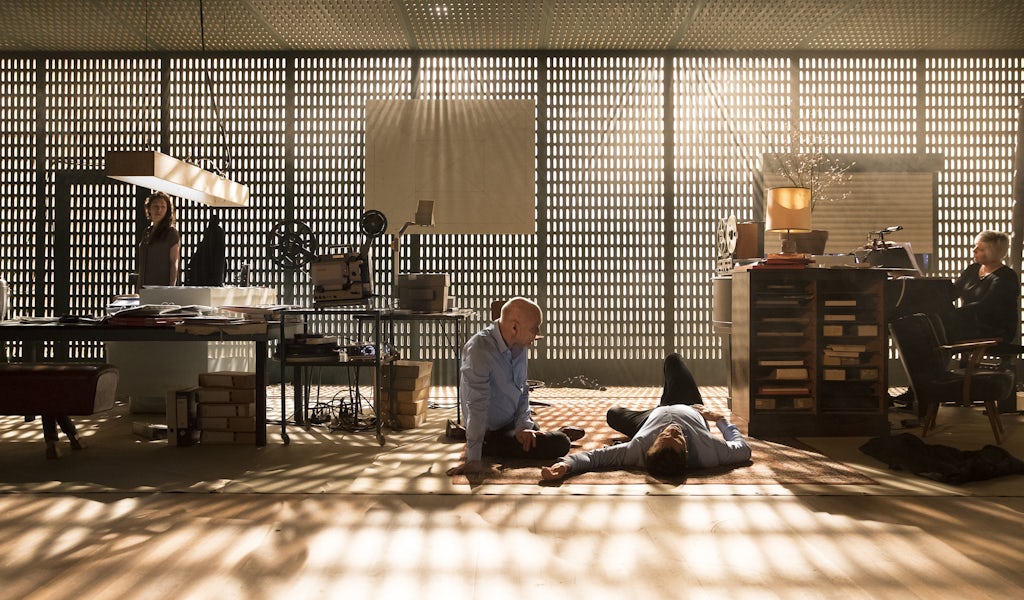
This ongoing tendency towards interdisciplinary creation is also leaving a profound impact on a younger generation of musicians and composers. Ensembles such as the Brussels-based string quartet Quatuor MP4, harpsichord and percussion duo Two Envelopes, and vocal ensemble HYOID are all placing multi-mediality at the very centre of their recent productions, while at the same time maintaining a distinctly individual aesthetic. Music theatre company Het Nieuwstedelijk, based simultaneously in Leuven, Hasselt, and Genk, explicitly sets out to make ‘theatre for the ear’.
In fact, several of these younger Flemish ensembles have grown from the many educational programmes for contemporary music launched by these ensembles.
These include the Advanced Master in Contemporary Music at the Royal Conservatory / School of Arts Ghent, which was co-founded by Ictus and Spectra Ensemble; the ChampdAction.LAbO, a lab for young creators which focuses on interdisciplinarity and the use of new technologies; and the Nadar Summer Academy, a summer camp for young musicians from the age of fourteen onwards, which runs in collaboration with MATRIX New Music Centre. With projects such as The Times and The Times Academy, HERMESEnsemble has developed complementary training programmes aimed at young composers.
Out of the (black) box
All across Flanders, concert halls such as Concertgebouw Brugge, deSingel, de Bijloke, Miry, STUK, and Handelsbeurs Ghent, as well as opera houses such as OperaBallet Vlaanderen (Ghent/Antwerp) and De Munt (Brussels) regularly showcase contemporary music in their programming. Several of these concert halls also host specialised contemporary music festivals, such as TRANSIT and Ars Musica. Focusing more explicitly on contemporary music in their programming are the Brussels-based workspace for experimental music and sound art Q-02, the Antwerp-based production platform Sound in Motion, as well as the experimental concert circuit (and record label) run by KRAAK. New music is also very much alive outside of the traditional metropolitan circuits. In Kortrijk, concert and festival organiser Wilde Westen offers a broad interregional platform for a wide range of contemporary practices, ranging from sound art and contemporary composition to experimental forms of jazz and pop/rock. In Bruges, Cactus Muziekcentrum focuses on experimental music from across the globe, programming an eclectic mix of adventurous sounds from Toeareg rock to local nu jazz. In Tongeren, B-Classic explores the interrelationships between new music and contemporary society through a series of community projects and artist commissions. The list goes on.
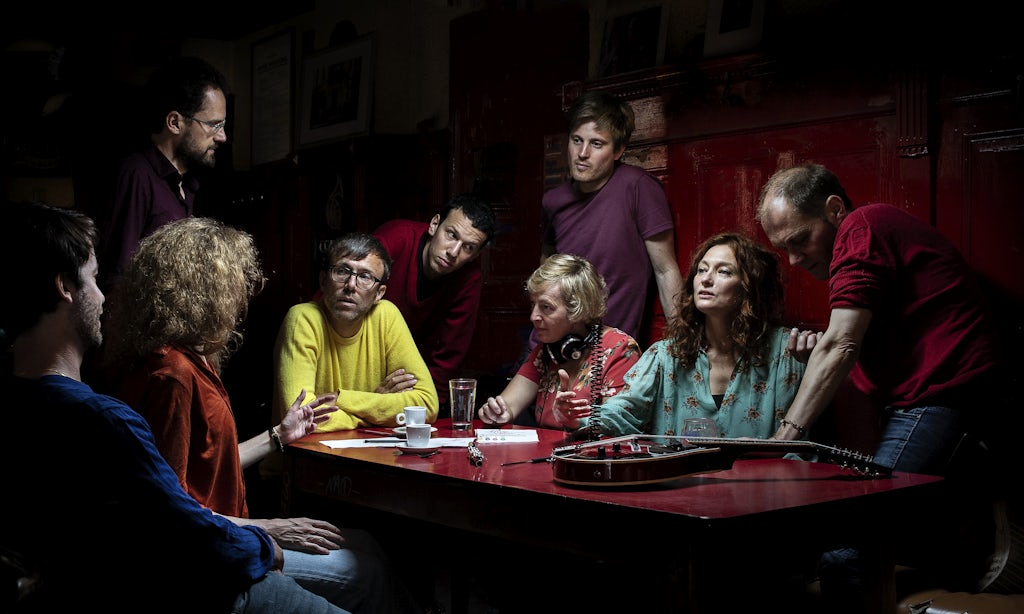
In recent years, however, Flanders has seen more and more artists leave the traditional black box that is the concert hall behind to perform their work in more unconventional spaces. This trend can be traced back to the late 2000s, when Ictus first launched their so-called Liquid Room concerts – large, multi-stage events in which the audience is invited to freely wander between an eclectic set of performances. Today, Ictus’ Liquid Room series has gained somewhat of a cult status, and the concept has grown into a mini festival of sorts.
In the early 2010s, composer Serge Verstockt teamed up with his brainchild ChampdAction to organise a series of informal and free concerts in Antwerp’s St. Anna’s Tunnel, an underpass which connects the left and right banks of the city. Nadar Ensemble too have proven to be experts in developing productions that challenge the traditional concert format. In 2012, they commissioned the German composer Michael Maierhof to compose a work for ensemble and four hot air balloons, to be performed in open air on the central market square of Sint-Niklaas. With their Homejacking project in 2018, the ensemble took the idea of their artistic ‘residency’ in Concertgebouw Brugge perhaps a bit too literally, when they provided a modern twist on the eighteenth-century tradition of the Schubertiade by fanning out across the city of Bruges to perform in people’s living rooms. These novel concert setups radically challenge the roles of both the performers and their audiences, and quite literally open up new spaces for musical experimentation. Audience participation is a crucial factor in a lot of these models.
Through these emerging tendencies towards hyper-connectivity, multi-mediality, and audience participation, the Flemish contemporary music scene holds a mirror up to contemporary life in an ultra-globalised and inherently pluralistic world. Up to a certain extent, the continuing inclination towards dialogue and conversation also highlights how typically and inherently Belgian the current new music field in Flanders is. For, in a country that has not one but seven governments, nothing is more important than collaborating and finding common ground to build on.
Postlude
Written in the midst of an ongoing global pandemic, this article is, of course, but a snapshot of how things ‘used to be’, before life as we knew it was so dramatically disrupted by lockdowns, social distancing measures, and protective shields. While the exact economic and socio-cultural impacts of COVID-19 are hard to predict, chances are that the pandemic will leave a permanent mark on the field of contemporary music. However, the author is optimistic. For, perhaps the most apparent trend that emerged from the field during the pandemic, is that of resilience. Even in the middle of a global crisis, Flemish new music has proven to stand strong and to continuously reinvent itself.
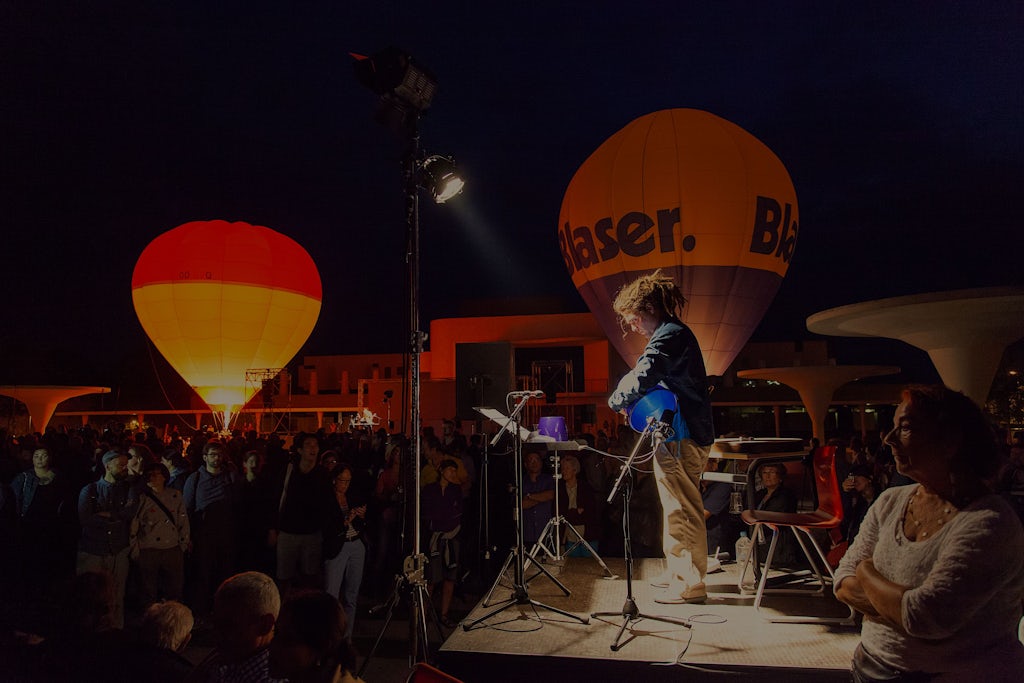
In a time when the regular concert circuit was momentarily put to a full stop, Nadar Ensemble organised a virtual performance of Stefan Prins’ participatory work FITTINGinSIDE (2007) for trombone. Audience members were invited to dial in on a Zoom meeting and take a fifteen-minute walk around their neighbourhoods, while a performance of the trombone work was live-streamed to their headphones.
The event received attention from a global audience and was even picked up by music critic Alex Ross in an article for The New Yorker. Meanwhile, Brussels-based composer David Helbich started a new composition cycle called Scores for Looking out the Window (Eyepieces).
These graphic scores, which invite the performers to engage musically with the world as seen through their window, were disseminated by the composer via frequent posts on Facebook. Together with Danish composer and sound artist Lars Kynde, Maya Verlaak curated an online exhibition titled Perform It Yourself (PIY) Scores, in which they collected and commissioned small-scale scores for anyone to perform from the comfort of their own home. This is but a small selection of the many artistic initiatives that emerged from the Flemish field of new music during the weirds months of the coronavirus lockdown. As almost all of these initiatives were and continue to be disseminated over the internet in one way or another, contemporary music from Flanders is now reaching audiences from all over the world and is more global than ever.
In Flemish, there is a saying that goes “the blood travels where it cannot go” (NL: “het bloed kruipt waar het niet gaan kan”), meaning that one cannot conceal one’s true nature. This has proven more than true for the Flemish new music scene, which could not suppress its urge towards creative innovation even in times of global crisis. Standing strong today and resiliently making its way into the future: new music from Flanders is a force to be reckoned with.
Discover our guide to Contemporary Music in Belgium
We are trying to show content from Issuu.
Kunsten.be only uses minimal cookies. To view content by a third party website, this site can place additional cookies. By continuing to browse you are agreeing to the use of those third party cookies.
Read more about our privacy policy?





